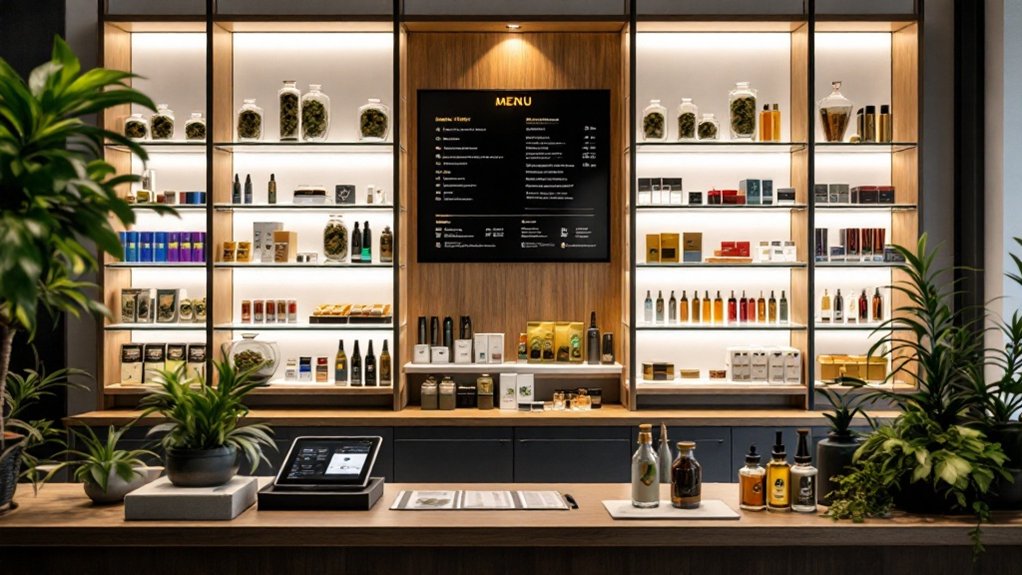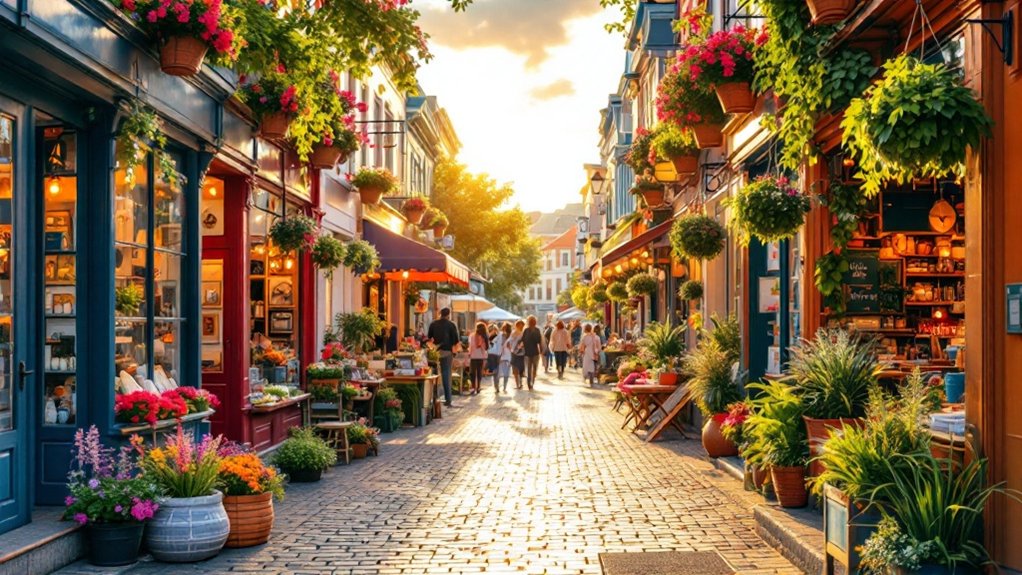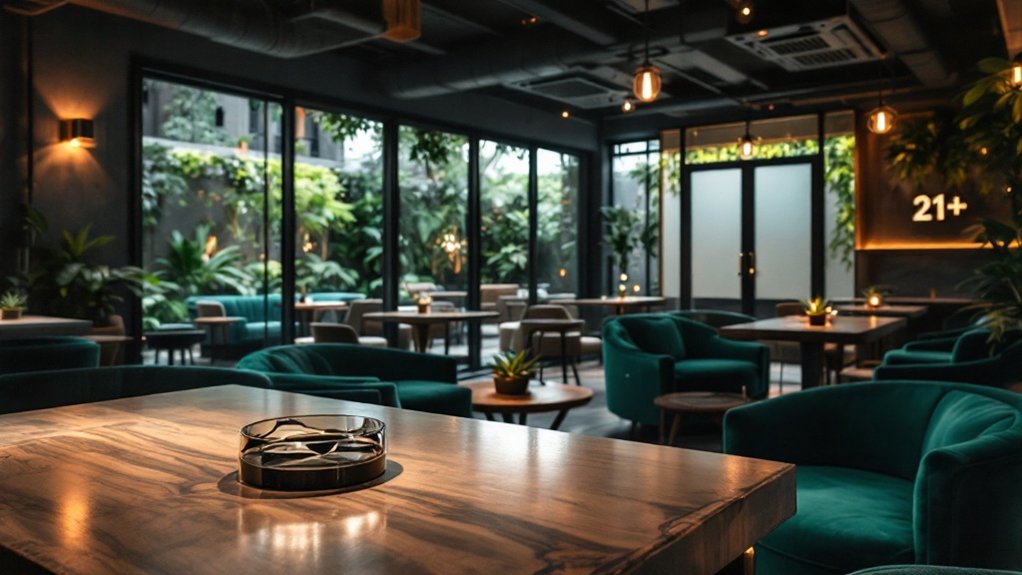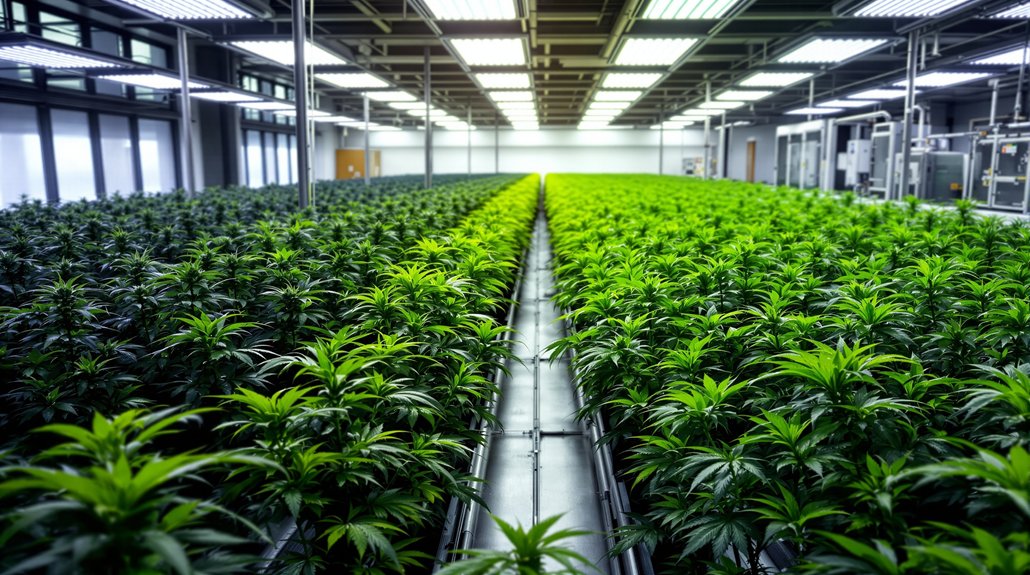Cannabis retail is exploding, set to hit $39 billion this year. Millennials dominate sales at 46.2%, but Gen Z is coming in hot with 11.3% year-over-year growth. Smart retailers are adapting fast. Integrated POS systems, diverse product offerings, and creative marketing despite regulations? That’s what’s working. New York and Florida markets are booming. Young women now outpace men in consumption. The generational divide shapes everything.
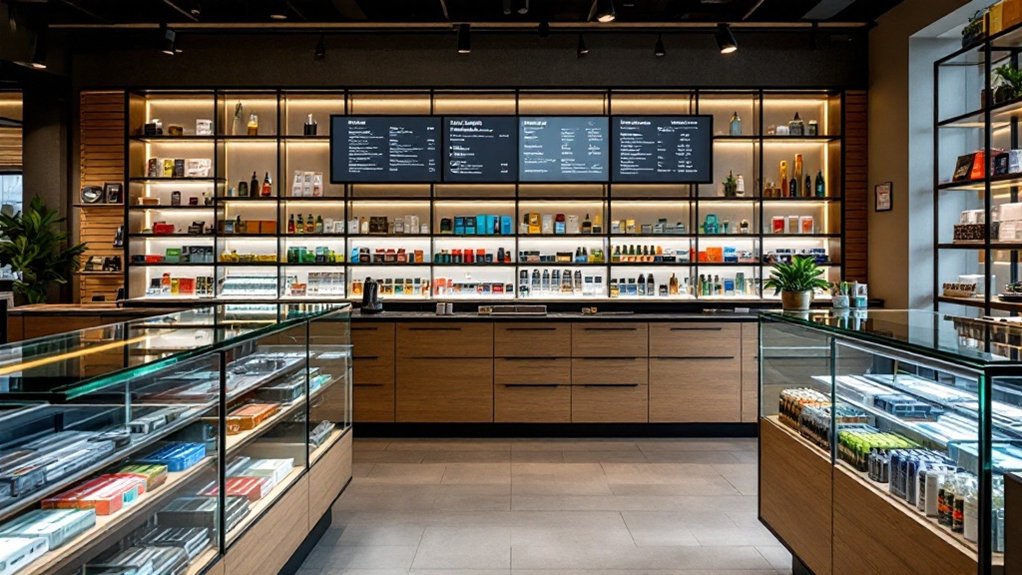
While traditional retail sectors struggle to maintain growth, the cannabis industry continues its meteoric rise across America’s economic landscape. The numbers don’t lie. U.S. cannabis sales are projected to hit a staggering $39 billion this year. That’s serious cash. And the government’s getting their cut too, cannabis tax revenue stands at $20 billion, nearly double what alcohol brings in. Talk about a green rush.
Who’s buying all this weed? Millennials lead the charge, accounting for 46.2% of sales, while Gen Z is creeping up fast with an 11.3% year-over-year growth rate. Together, these younger consumers represent nearly two-thirds of all cannabis purchases nationwide. They’re reshaping what sells, too. The kids want their vape pens. Boomers still prefer traditional flower. The industry is seeing young women now outpacing men in cannabis consumption, influencing new product development directions. Retailers are scrambling to keep up.
The generational divide is clear – millennials buy the weed, Gen Z grows the trend, and boomers stick to what they know.
State markets are expanding rapidly. New York plans to more than double its dispensaries to over 625 in 2025, potentially generating $1.5 billion in sales. For every $10 spent at these dispensaries, an additional $18 is injected into the local economy. Florida‘s cementing its position as the second-largest market with projected sales of $3.2 billion. Competition is heating up everywhere.
Product innovation drives the industry forward. Beverages, edibles, and concentrates are gaining traction, though some consolidation is happening. Beverage brands dropped from 148 to 117 between Q1 2024 and Q1 2025. Survival of the fittest. Canada’s pioneering Cannabis Act continues to influence product development with its focus on safety and quality standards.
Technology is revolutionizing the retail experience. Debit card transactions, integrated POS systems, and online ordering are becoming standard. Consumers expect convenience.
Marketing remains tricky in this highly regulated space. Brands leverage social media, influencers, and loyalty programs to stand out. Differentiation matters now more than ever as prices continue to fall. In fact, they’ve dropped 32% since 2021.
The landscape is evolving fast. Companies that can navigate regulatory hurdles while meeting shifting consumer demands will thrive. The rest? They’ll get smoked out.
Frequently Asked Questions
How Can I Legally Invest in the Cannabis Retail Sector?
Investors can legally access cannabis retail through several channels.
U.S. cannabis stocks trade on Canadian exchanges, while ETFs like MSOS offer diversified exposure.
Canadian producers list on major U.S. exchanges.
Accredited investors can join private placements or cannabis-focused VCs.
Real estate investment in cannabis-zoned retail provides exposure without operational risk.
The sector’s volatile, though.
Regulatory shifts happen constantly.
Not for the faint-hearted.
What Insurance Options Exist for Cannabis Retail Businesses?
Cannabis retailers face a minefield of insurance needs. General liability coverage handles those pesky slip-and-falls, while product liability insurance protects against claims when customers blame your products for their problems.
Specialized options exist too: cyber liability for data breaches, property insurance for theft, D&O coverage for executives, and workers’ comp for injured employees.
The market’s hardening though. Premiums up, underwriting stricter. Not cheap, but cheaper than lawsuits.
How Do International Cannabis Retail Markets Compare to the U.S.?
International cannabis markets? Totally different game from the U.S.
North American shops push recreational products while European retailers operate almost exclusively through pharmacies. Medical focus dominates internationally.
Canada has government stores alongside private ones, a hybrid system.
Latin America channels through pharmacies.
Asia? Barely exists.
The U.S. leads with brand-heavy, tech-forward retail operations while international markets face stricter regulations.
Everyone’s figuring it out. Some better than others.
What Cybersecurity Threats Are Specific to Cannabis Retail Operations?
Cannabis retailers face unique cybersecurity nightmares.
Federal banking restrictions force reliance on sketchy “cashless ATMs” and alternative payment systems – ripe targets for hackers.
Mandatory third-party compliance software creates multiple vulnerability points.
Remember STIIIZY’s breach? Classic example.
Point-of-sale systems are constantly under attack, while regulatory requirements across different states create a compliance mess.
The cash-heavy nature of the business? That’s just digital catnip for criminals.
Security infrastructure has a hard time keeping pace.
How Will Federal Legalization Affect Existing Cannabis Retail Businesses?
Federal legalization will fundamentally reshape cannabis retail.
Mom-and-pop shops? They’re targets for acquisition now. Big corporations are coming with deep pockets and ruthless efficiency.
Banking access will finally end the cash-only nightmare, but competition will intensify dramatically.
Interstate commerce means wider distribution but thinner margins.
Regulatory compliance gets more complex, not less.
The upside? No more crushing 280E taxes.
The industry’s growing up. Fast.
